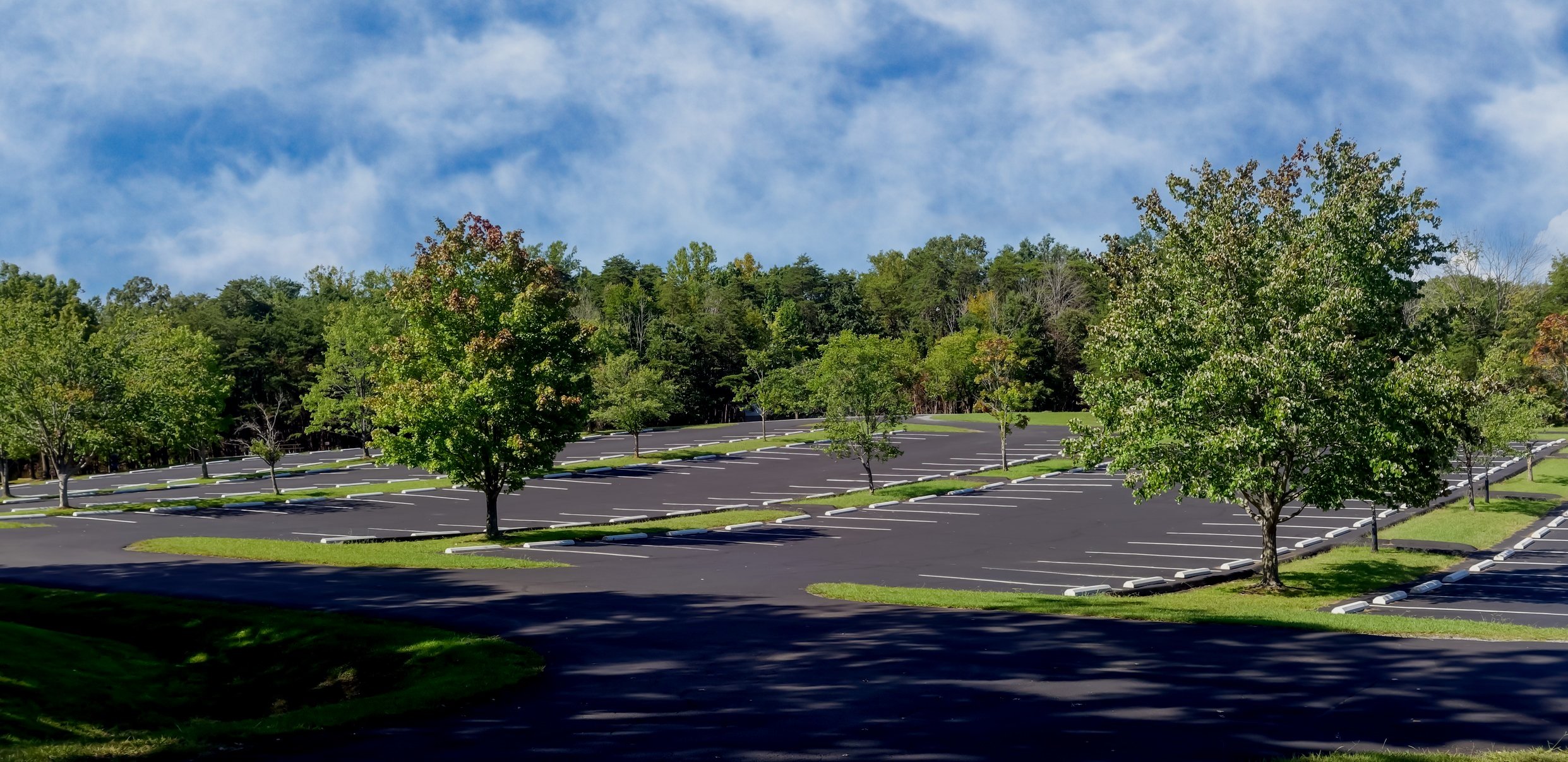
School Safety Starts in the Parking Lot.
Is Yours Up to Code?
Parents Judge Your Campus Before They Even Step Inside.
Make Sure It Looks Professional
Schools and universities are more than just educational institutions—they are centers of safety, organization, and first impressions. Whether it’s parents dropping off their kids, students navigating campus, or visitors attending events, the condition of the parking lot shapes their experience before they even step inside.
A well-maintained lot instills trust, reinforcing the school’s commitment to safety, organization, and professionalism. On the other hand, cracked pavement, faded lines, and potholes send the wrong message—suggesting neglect, disorganization, and a lack of funding.
Beyond appearance, a poorly maintained lot is a liability risk, leading to trip hazards, vehicle damage, and accessibility issues that could result in lawsuits or complaints. Schools have a duty of care to provide a safe, accessible environment for students, staff, and visitors—and proper asphalt maintenance is a key part of that responsibility.
What’s the Most Important Asphalt Maintenance for Schools & Universities?
-
Keeps the parking lot smooth, black, and professional-looking, protecting against cracking, wear, and winter damage.
-
Ensures clearly marked parking spaces, bus lanes, fire lanes, and accessible spots, preventing congestion and liability risks.
-
Stops cracks from expanding, preventing costly potholes and safety hazards.
-
Prevents trip hazards, vehicle damage, and complaints from parents and staff.
-
Ensures accessible parking, crosswalks, and drop-off zones meet legal requirements.
Common Parking Lot Issues Schools & Universities Face
Cracks & Potholes – Heavy traffic, buses, and changing weather cause asphalt to deteriorate quickly, leading to trip hazards and expensive repairs.
Faded Line Striping – Parking lots without clear markings cause congestion, confusion, and potential safety risks for students and staff.
Liability Risks – Schools are legally responsible for preventing injuries—neglecting parking lot maintenance can lead to lawsuits and compliance fines.
Harsh Winter Damage – Snow, ice, and salt weaken asphalt, making cracks and potholes worse if not properly maintained.
Drainage Issues – Poor drainage leads to standing water, which speeds up asphalt breakdown and creates slippery conditions.
How a Neglected Parking Lot Impacts Schools & Universities
-
Schools and universities can be held liable if a student, staff member, or visitor is injured due to cracks, potholes, or unsafe walkways.
-
Parents and prospective students judge campus facilities immediately—a poorly maintained lot undermines credibility.
-
Faded or missing markings for accessible parking, crosswalks, and drop-off zones can lead to ADA violations and fines.
-
A lack of maintenance shortens pavement lifespan, forcing schools into costly repaving projects instead of affordable annual upkeep.
Best Maintenance Schedule for Schools & Universities 🚀
-
Keeps pavement smooth, black, and protected from weather and daily wear.
-
Maintains clear, organized parking and traffic flow.
-
Prevents small cracks from expanding into potholes.
-
Ensures safety for students, staff, and visitors.
✺ Frequently asked questions ✺
-
Schools are responsible for student and staff safety—cracks, potholes, and faded lines create trip hazards, traffic confusion, and liability risks. A well-maintained lot prevents injuries, protects vehicles, and improves overall campus organization.
-
Every 1-2 years to ensure clear visibility for parking spaces, crosswalks, bus lanes, and fire lanes, reducing congestion and safety risks.
-
Parents and prospective students judge campus facilities immediately—a parking lot with potholes, faded lines, and cracks makes the school seem neglected and underfunded, impacting enrollment and reputation.
-
The best way to save money is preventative maintenance—annual crack filling, line striping every 1-2 years, and sealcoating every 2-3 years. This keeps the lot in great shape and avoids expensive repaving projects.


